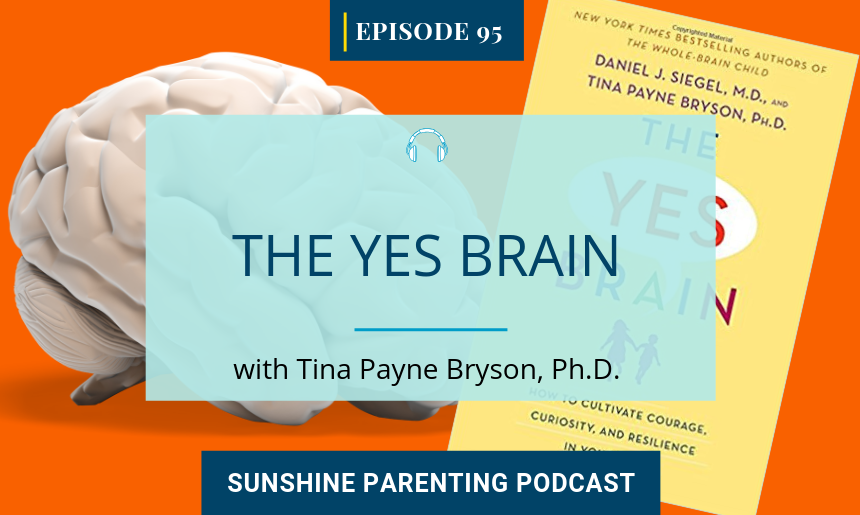
Episode 95 is a replay of one of my most popular episodes (Ep. 20) with a new intro and additional tips. In this episode, I interview Tina Payne Bryson about the book she co-authored with Dr. Dan Siegel, The Yes Brain- How To Cultivate Courage, Curiosity, and Resilience In Your Child. We talk about what a “Yes Brain” is, how it’s different from a “No Brain,” why it’s so important to cultivate “yes brains” in our children and in ourselves, and strategies for enlarging our “green zones.”
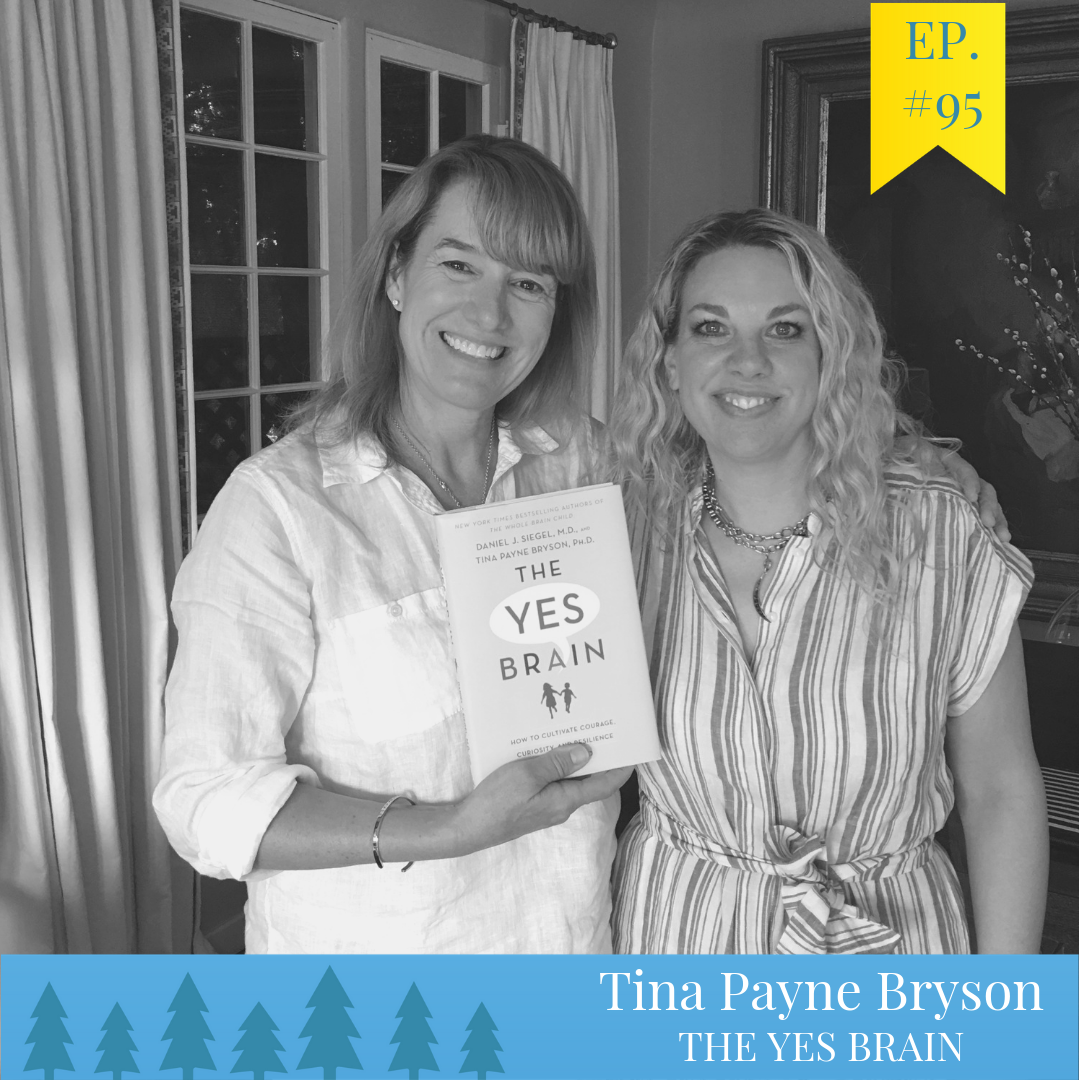
Big Ideas
• The brain is either in a receptive state or a reactive state.
• A “Yes Brain” is open and resilient in the world.
• A “No Brain” is shut down and reactive in the world.
• The Green Zone is a Yes Brain state.
• The Blue Zone is a reactive state where our nervous system is turned down too far.
• When we are in the Red Zone or the Blue Zone, we are in a reactive state.
• The goal is to expand the Green Zone over time.
• A fear state is a No Brain state.
• The point of discipline is to teach, so in order to become disciplined, kids need to be in a state of mind in which they can actually learn. This is the Green Zone.
• If a child is falling apart, they need connection and empathy. Connection and empathy will calm their nervous system down quickly.
Quotes
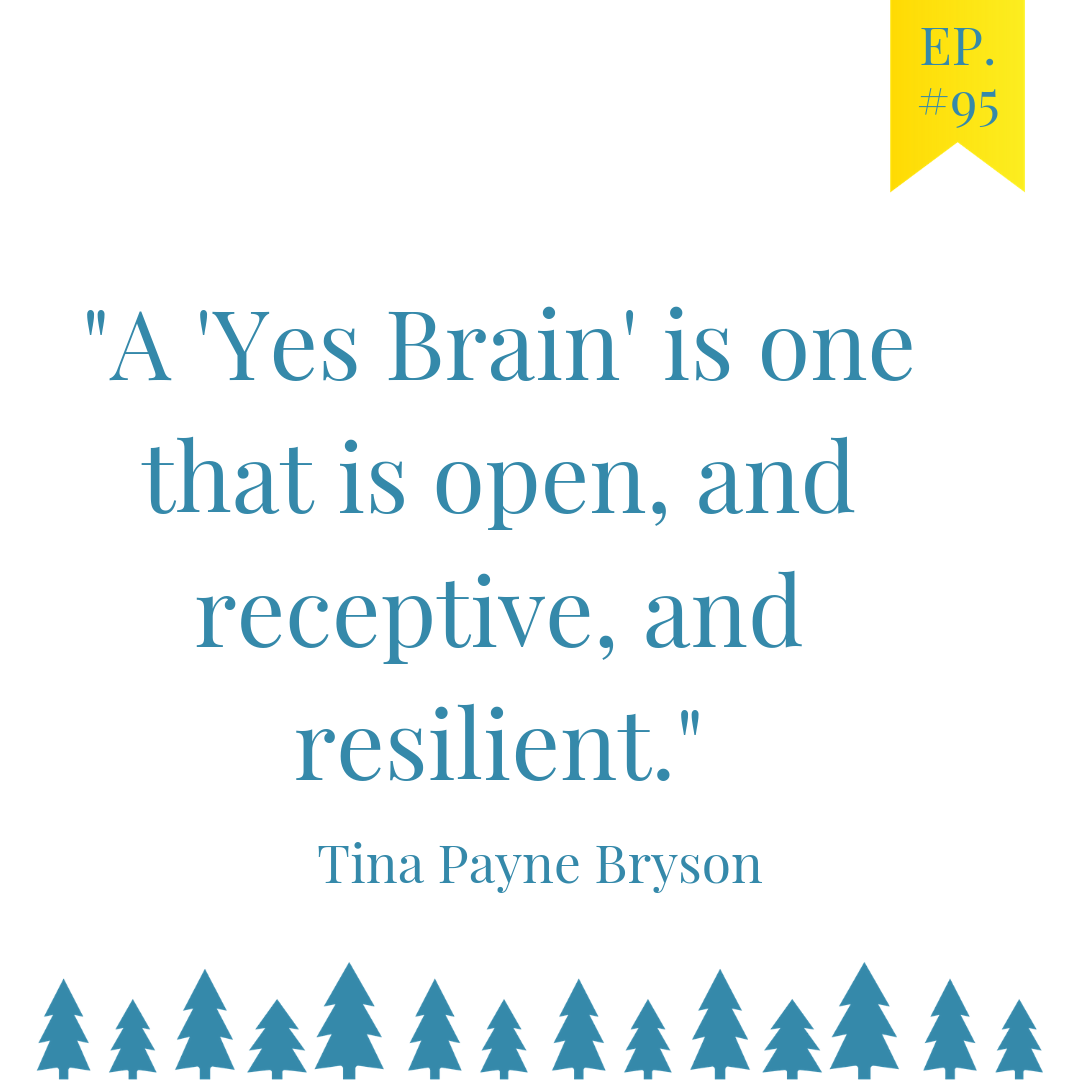
Tina: “The brain is either in a receptive state or it’s in a reactive state. So we’re calling those states a ‘yes’ state and a ‘no’ state- a Yes Brain and a No Brain.”
Tina: “A Yes Brain is one that is open, and receptive, and resilient. It’s one that, even when something is really hard, will be willing to stick with it. We’re willing to push through and stay calm enough on the inside so that we can be curious, and creative, and really handle ourselves well, even when things are not going well.”
Tina: “A No Brain, on the opposite side of that, is a brain that is shut down and rigid. It’s like those times when our kids are unwilling to try something new, or they’re really hard on themselves, or they are full of fear or anger, and they’re reactive and lash out.”
Tina: “A Yes Brain is one that is open and resilient in the world, and No Brain is one that is shut down and reactive in the world.”
Audrey: “Adults still struggle with those things. We all have those things that trigger us into our No Brain, and we say and do things that we wish we hadn’t afterwards.”
Tina: “One of the hallmarks of all of our books is that at the end of the book is a ‘refrigerator sheet’. So the big ideas of the book, the summary, and the main bullet points are in a ‘refrigerator sheet’ so you can make a copy of it and reference it.”
Tina: “The cartoons give kids actual tools that they can use to help them to have more of a Yes Brain approach in the world.”
Tina: “The Green Zone is really a Yes Brain state.”
Tina: “When you get really afraid or angry, or you’re having a really hard time, you’re more in a reactive state, you feel it in your body. Your heart beats faster, your muscles tense up, all those kinds of things. We would call that the Red Zone.”
Tina: “The Blue Zone is also a reactive state where our nervous system is turned down too far.”
Tina: “When we are in the Red Zone or the Blue Zone, we are in a reactive state. We can’t really handle ourselves well and we aren’t really being resilient in the moment.
Tina: “The Green Zone is the Yes Brain state where even if things are frustrating, or scary, or really fun, or whatever it is, that we are balanced in our bodies and our minds, so that we can be the most resilient, and curious, and creative, and problem solvers.”
Tina: “I talk to parents, and educators, and clinicians, and camp counselors about how we can think about our goals as caregivers of other children- and even of ourselves.”
Tina: “The goal is to expand the Green Zone over time. This is a survive and thrive sort of mentality.”
Tina: “The key is that we want to find out specifically what the fears (around going to camp) are.”
Tina: “Approach the child with your own Yes Brain, in a very curious, open state. You want to give them specific tools. You want to allow them to sit in the discomfort of their feelings and not distract them from it.”
Tina: “We acknowledge the feeling, we sit in the feeling, but we don’t get stuck in the feeling.”
Tina: “A fear state is a No Brain state. It’s natural and normal, and we all feel it at times. The key is not to say ‘I should never feel that way’. The key is ‘How do I help my child go from that state into one where they can tolerate it and become triumphant?’.”
Tina: “We want just the right amount of stress, just the right amount of challenge for children because then they can do it triumphantly.”
Tina: “The whole point of discipline is to teach, so kids have to be in a state of mind in which they can actually learn, which is the Green Zone.”
Tina: “The number one thing you can do in the moment if your child is falling apart, is connection and empathy.”
Tina: “In a No Brain state, a reactive state where we’re not thinking clearly, our nervous system is actually in a state of stress-response, as if something’s threatening or actually happening. And the thing that calms our nervous system down more than anything else, and allows us to return to that calm Green Zone state, is safety and connection.”
Tina: “Sometimes Red Zone states of mind lead to really bad behavior.”
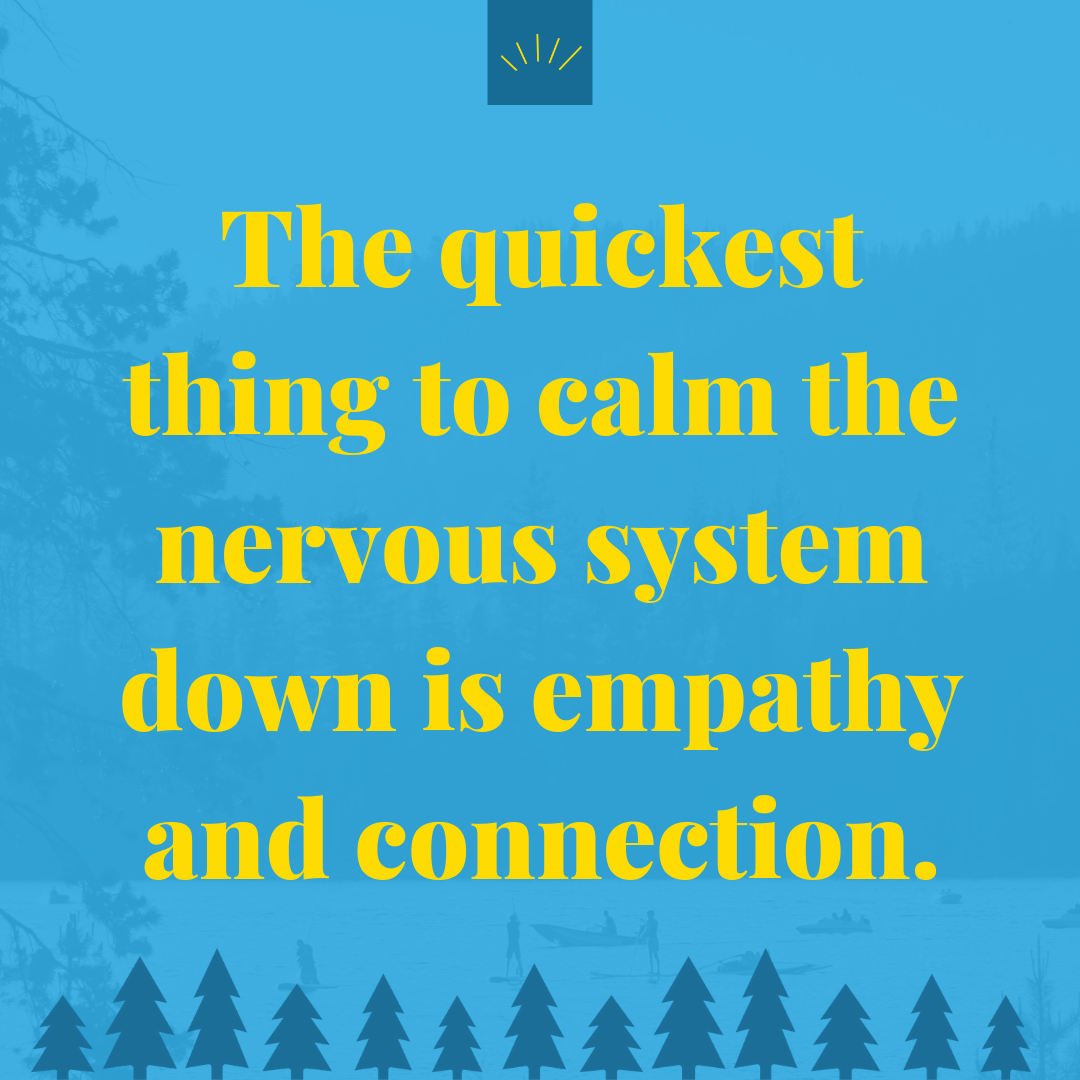
Tina: “The quickest thing to calm the nervous system down is empathy and connection.”
Tina: “The Red Zone becomes contagious.”
Tina: “If you’re screaming at someone, basically you’re threatening them. When our brains detect threat, they go into a reactive state in order to survive.”
Tina: “One way we can bring in empathy and connection is to sit in a really relaxed posture, below the child’s eye level. And stop lecturing and say something empathetic, like ‘Oh, buddy, you’re so angry right now. You’re having such a hard time and I can see how upset you are’. And also say ‘I’m right here with you.’.”
Tina: “The empathy piece allows the child to feel safe and allows their nervous system to go into a state of connection. And it reintegrates the brain and allows them to be sane again.”
Tina: “Movement helps release some of that Red Zone energy.”
Tina: “One of the best things we can do as parents if we’re in the Red Zone, is to activate a different neural network by how we move our bodies, how we talk and use our voices.
Tina: “All of our books are written with the exhausted, blurry-eyed parent in mind, and they really are quick reads.”
About Tina

Tina Payne Bryson
Dr. Tina Payne Bryson is the co-author (with Dan Siegel) of THE YES BRAIN (Random House, 2018) and the upcoming THE POWER OF SHOWING UP (Random House, 2020), as well as two New York Times bestsellers — THE WHOLE-BRAIN CHILD (Random House Delacorte, 2011), and NO-DRAMA DISCIPLINE (Random House Bantam, 2014) — each of which has been translated into over thirty languages. Tina is also working on a new book, THE BOTTOM LINE FOR BABY.
Tina is a psychotherapist and the Founder/Executive Director of The Center for Connection, a multidisciplinary clinical practice, and of The Play Strong Institute, a center devoted to the study, research, and practice of play therapy through a neurodevelopment lens.
Links
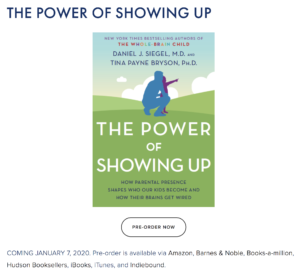 Other Books by Tina Payne Bryson and Dr. Dan Siegel:
Other Books by Tina Payne Bryson and Dr. Dan Siegel:
The Whole Brain Child: 12 Revolutionary Strategies to Nurture Your Child’s Developing Mind
The Power of Showing Up (January, 2020) – I’ve already pre-ordered!
Related Posts, Podcast Episodes, & Videos:
Helping Kids Find Their “Green Zone”
Ep. 30: How to Raise a Durable Human with JJ Madden
Ep. 71: Growing Your Child’s “Bushy Broccoli Brain”
10 Ways to Teach Kids to Calm Down
Tina Talking about “The YES Brain at Camp”
Tina introducing The YES Brain (before the book release)
